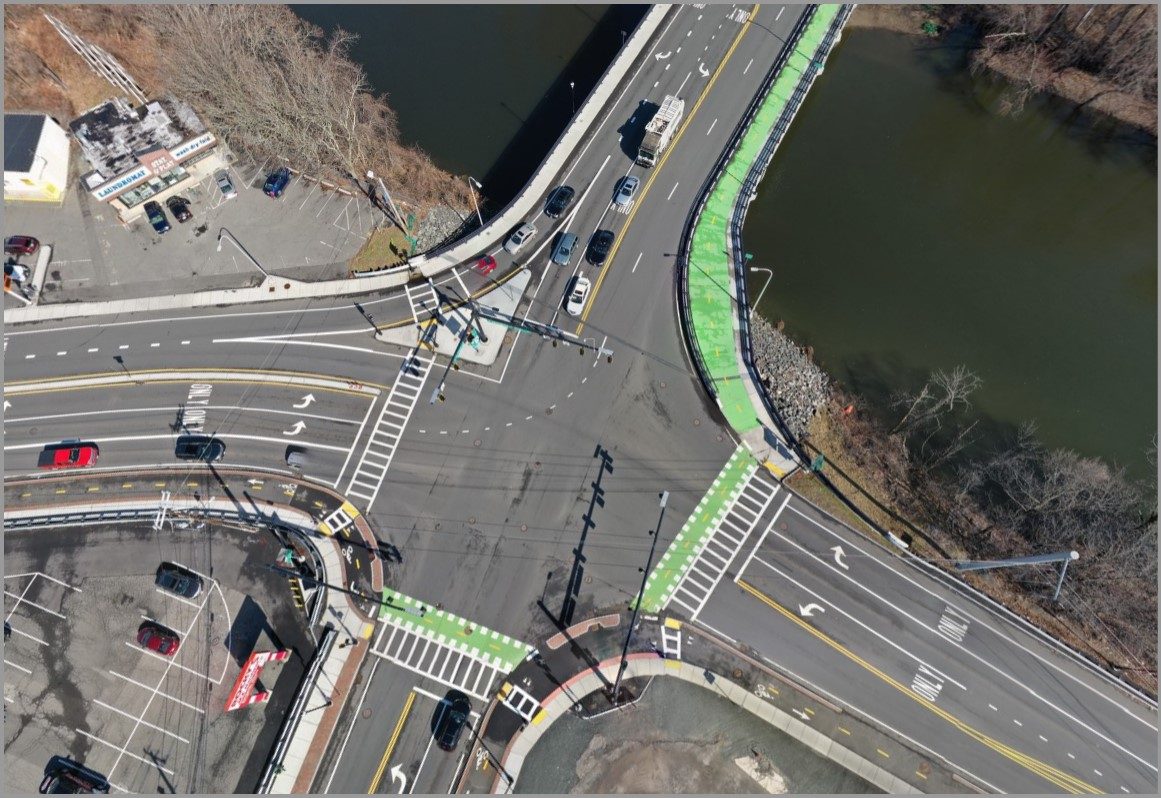Federal Funding Advances Drone Technology Integration for Statewide Projects
The Massachusetts Department of Transportation (MassDOT) Aeronautics Division has received a $1 million grant from the Federal Highway Administration’s Accelerated Innovation Deployment (AID) Demonstration Program. Funded by the Bipartisan Infrastructure Law, this grant propels the second phase of MassDOT’s initiative to integrate Unmanned Aircraft Systems (UAS), commonly known as drones, into its digital infrastructure.
This multi-phase project aims to create a comprehensive digital ecosystem to collect, process, and share drone data across MassDOT divisions. The Aeronautics Division plans to use the funding to expand their UAS-based digital systems, which will enhance project efficiency, lower costs, and improve public safety.
Phase Two: Building a Collaborative UAS Ecosystem
The second phase of this initiative focuses on streamlining data sharing across MassDOT’s Highway Division and other agencies. Acting MassDOT Aeronautics Administrator Denise Garcia explained, “By using drones to collect and analyze data on highway infrastructure, this second phase of our project represents a significant step toward leveraging new technology to help MassDOT Highway improve management processes, strategic planning, and operations.”
MassDOT’s digital systems aim to simplify data discovery and improve inter-agency collaboration. For example, if the Rail and Transit Division has a project at a site where the Highway Division has already collected drone imagery, staff can access that data easily, reducing redundant efforts.
Sinan Abood, MassDOT’s Data & Analytics Team Leader, has also developed an internal online data hub to centralize UAS-collected information. “This gives engineers far more versatility to work on projects across Massachusetts,” said Abood. The portal will support day-to-day operations by reducing project costs, improving performance, and accelerating approvals.
Cost Savings Through UAS Technology
The adoption of drones is already showing promise for reducing project costs and improving efficiency. One example involves construction oversight, where drone imagery can validate contractor estimates and inform design adjustments remotely. “If a vendor proposes using a certain volume of materials, the imagery allows the organization to evaluate whether that estimate is reasonable,” explained Garcia. This approach minimizes the need for frequent site visits and enhances accuracy by integrating data with computer-aided design tools.
The program also supports advanced bridge inspections, asset mapping, and highway corridor detection. Small drones equipped with high-resolution cameras and sophisticated obstacle avoidance technology are used for these tasks. These drones can capture close-up images in confined spaces, making them ideal for inspecting bridges and other infrastructure.
Scaling Drone Technology Across Massachusetts
The UAS-based digital infrastructure is designed to support projects in both rural and urban areas. Acting Aeronautics Administrator Denise Garcia highlighted that this phase will enable simultaneous monitoring of multiple projects, improving scalability and responsiveness.
MassDOT Highway Administrator Jonathan Gulliver emphasized the importance of this collaboration: “The Highway Division looks forward to an active partnership as this invaluable MassDOT Aeronautics project works to make surface transportation safer, more responsive to public needs, and more adaptable to new technologies.”
Partnerships and pilot programs are already underway to test the scalability of the UAS systems before full statewide implementation. These efforts ensure the systems can meet the diverse needs of different regions across Massachusetts.
Looking Ahead: Phase Three and Long-Term Goals
While the exact scope of Phase Three remains undecided, MassDOT plans to build on the insights gained from the current phase. “Our focus remains on innovation—in both our operational approaches and our adoption of leading-edge tools,” said Garcia.
The third phase will likely emphasize further advancements in efficiency and scalability, driven by the latest technological developments. Long-term success will be measured by reduced project turnaround times, lower costs, improved data accessibility, and the ability to manage multiple projects simultaneously.
Transforming Infrastructure Management with UAS
MassDOT’s Drone Operations Program has already demonstrated significant potential for improving infrastructure management. By leveraging drone technology, the agency is setting a precedent for innovation in public transportation. As Transportation Secretary Monica Tibbits-Nutt noted, “The funding from this second phase of the AID grant will give us a unique opportunity to improve and expand digital software systems for drones.”
This initiative reflects Massachusetts’ commitment to advancing infrastructure through cutting-edge technology while ensuring safety, efficiency, and economic growth across the Commonwealth.


